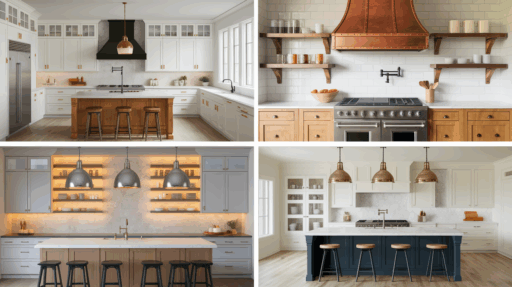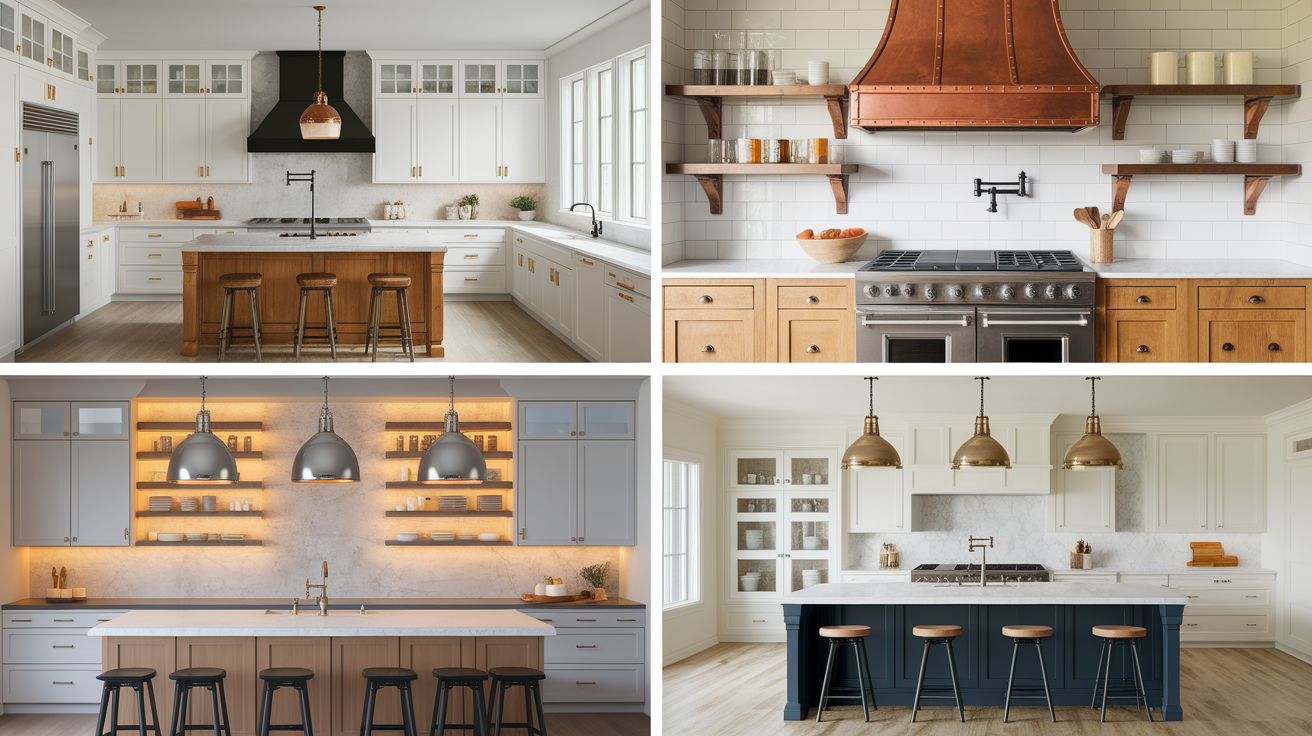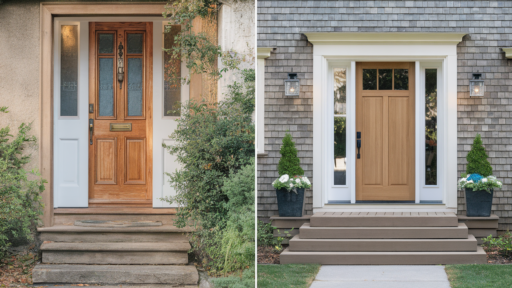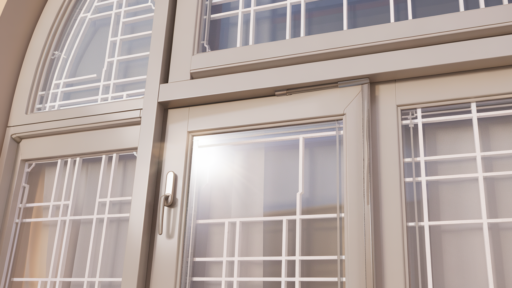When I first started designing my kitchen, I thought I had to match all the metal finishes – faucet, handles, lights, everything.
But I quickly realized that mixing metals can actually make the space feel more layered, interesting, and personal.
Combining finishes like brushed nickel, matte black, brass, or stainless steel adds contrast and depth without making the kitchen look messy or unplanned. The key is to mix with intention and balance, not just toss in random pieces.
In this blog, I’ll share how I approached mixing metals in my own kitchen, along with tips that can help you do the same.
If you’re doing a full remodel or just changing out hardware, using more than one metal finish can create a beautiful and timeless look.
Let’s see how to make it work in a way that feels easy and natural.
What Is the Mixed Metal Trend in Kitchens?
The mixed metal trend is all about combining different metal finishes – like brass, chrome, matte black, or copper – in one kitchen space.
Instead of sticking to a single finish for every handle, light fixture, or faucet, designers are now layering metals to add contrast, texture, and personality.
This trend breaks the old rule of “everything must match” and replaces it with a more flexible, creative approach.
It works in modern, farmhouse, and even traditional kitchens, bringing in subtle variation that makes the space feel fresh and customized.
By mixing warm and cool tones or shiny and matte surfaces, your kitchen can feel more dynamic and intentional. Done well, mixed metals look cohesive, not chaotic, and they instantly elevate the overall design.
Why Mixing Metals Works in Kitchen Design
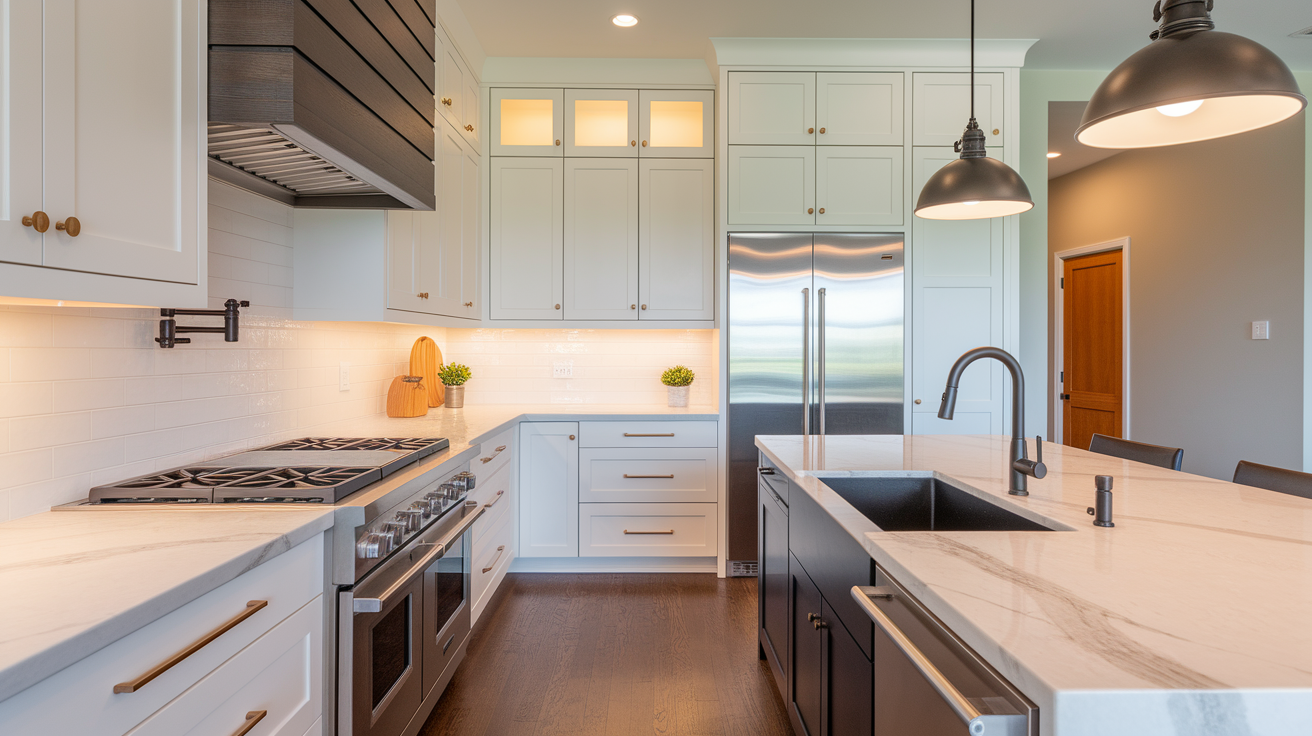
Using one metal everywhere can feel too uniform. Mixing metals adds contrast, defines spaces, and brings depth and warmth to your kitchen.
- Mixing finishes brings dimension to the space: Instead of looking flat or one-note, a kitchen with varied metal tones feels layered and visually rich. Just like in fashion or interior textiles, contrast creates interest.
- Different metals help define specific zones: You might use one finish for cabinet hardware and another for lighting or plumbing. This subtle separation can make the layout feel more intentional and organized.
- Blending metals avoids a showroom feel: A kitchen where everything matches exactly can seem overly polished or impersonal. Mixing tones gives the space a relaxed, collected-over-time look that feels more like home.
- Contrasting metals draw the eye to focal points: A brass pendant over the island or a matte black faucet will stand out against a backdrop of brushed nickel, helping highlight standout features.
- More finish options give you creative freedom: Instead of being limited to one metal, you can choose what looks best in each area, allowing for better product availability, personal style, and flexibility with future updates.
The Best Metal Finishes to Mix in a Kitchen
Not all metals are created equal, and knowing their unique look and feel can help you choose the right mix. From soft and subtle to bold and reflective, each finish brings something different to your kitchen.
1. Brushed Nickel
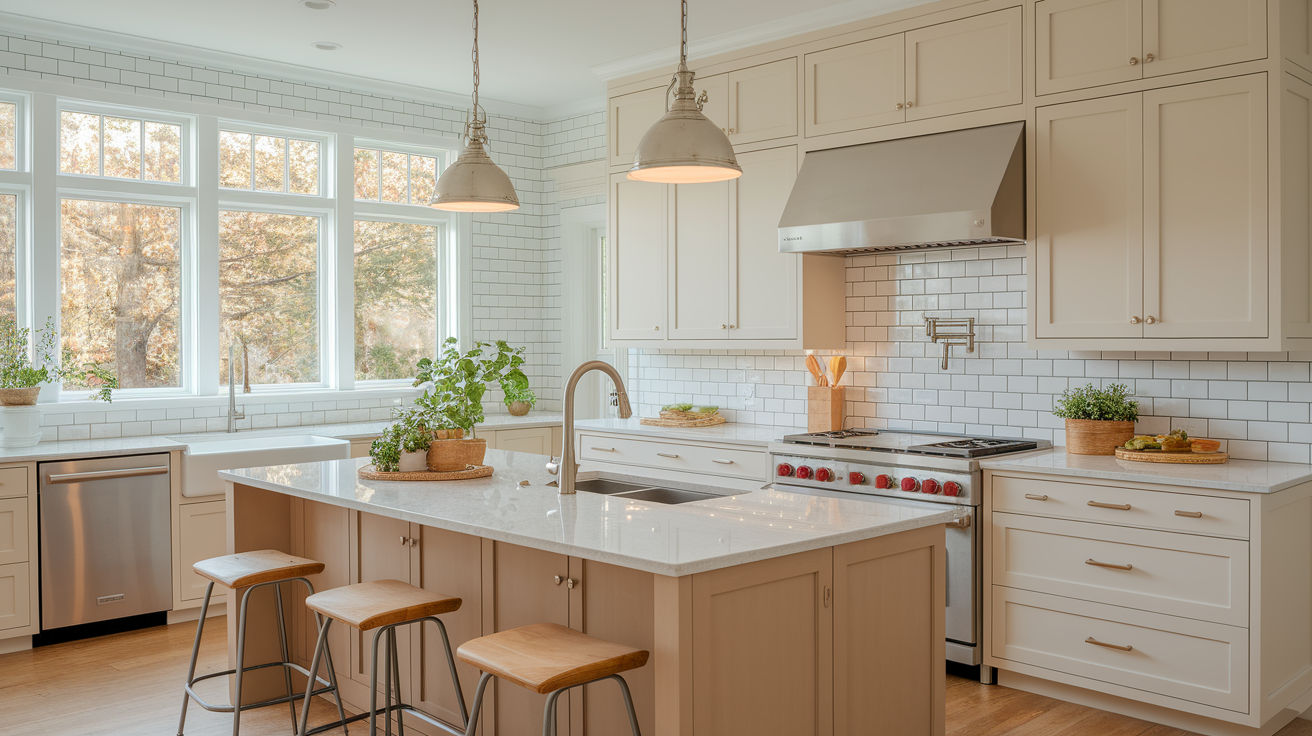
Brushed nickel offers a clean, soft appearance that complementsmany styles. Its slightly muted surface helps hide fingerprints and smudges, making it a practical choice for busy kitchens.
It pairs beautifully with both bold and subtle finishes, adding understated elegance to hardware and fixtures.
2. Matte Black
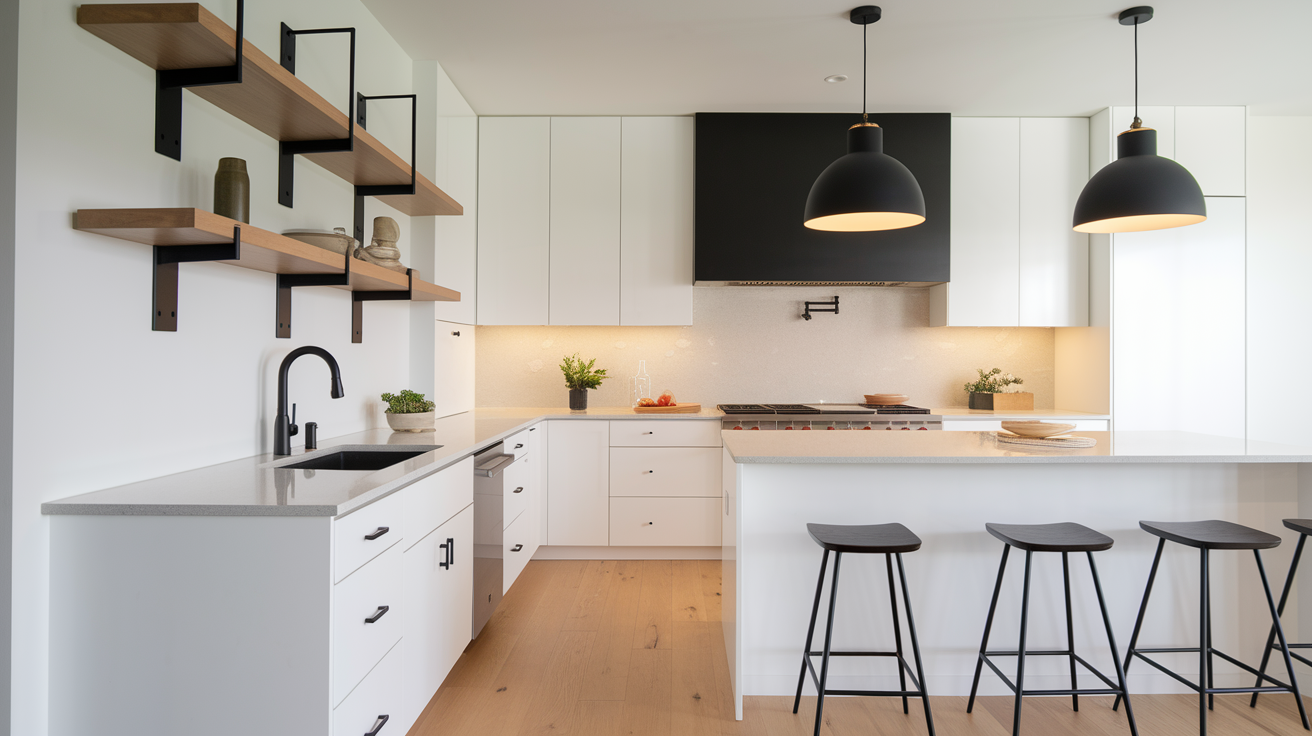
Matte black brings strong visual contrast and a modern, grounded feel to any kitchen. It works well on faucets, cabinet hardware, and lighting.
Because it blends easily with wood, stone, and other metals, matte black is one of the easiest finishes to mix with brass, chrome, or copper accents.
3. Aged Brass
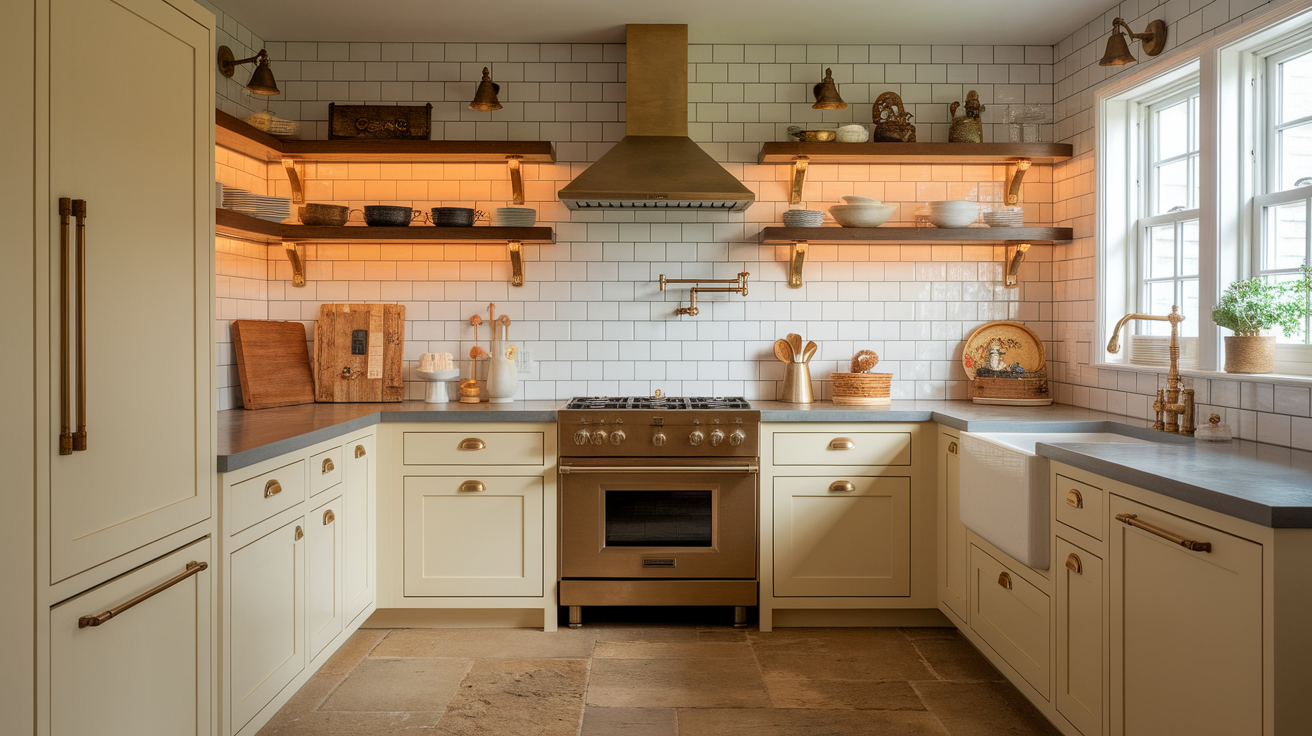
Aged brass has a classic, timeworn look that adds warmth and richness to the kitchen. It often appears on cabinet knobs, drawer pulls, or light fixtures.
Whether you’re going for a vintage or farmhouse look, this finish brings personality without overwhelming the space.
4. Polished Chrome
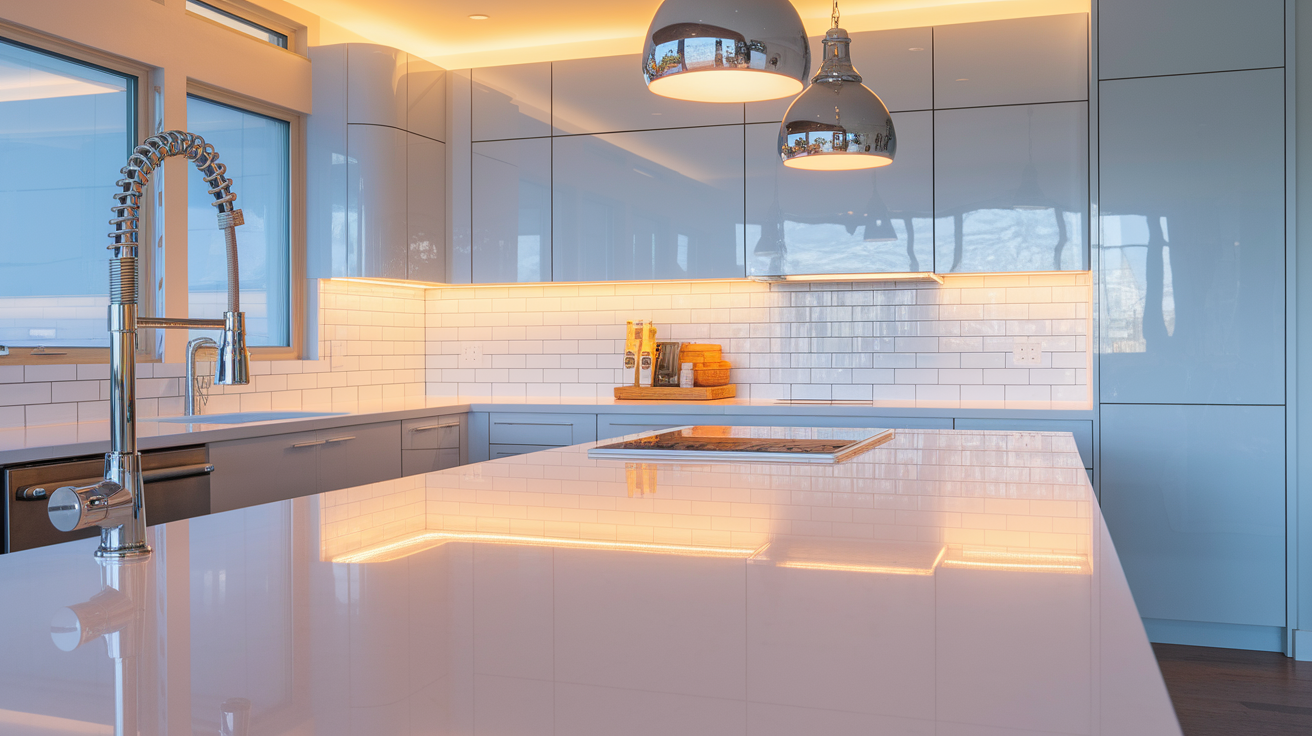
Polished chrome is sleek, bright, and highly reflective. It’s a favorite for both modern and traditional kitchens, often used on faucets and lighting fixtures.
At the same time,it shows fingerprints more easily; its crisp appearance pairs well with softer finishes like brushed nickel or aged brass for a clean, balanced mix.
5. Copper

Copper makes a bold, beautiful statement and is often used sparingly to highlight specific areas. It’s commonly found on range hoods, sinks, or accent lighting.
Over time, it naturally darkens and patinas, adding character and charm that suits farmhouse, rustic, or eclectic kitchen styles.
6. Stainless Steel

Stainless steel is durable, timeless, and widely used in appliances. It offers a clean, functional appearance and is easy to coordinate with other metals.
It can serve as a neutral base that allows warmer accents, like brass or copper, to stand out, making it perfect for mixed-metal kitchens.
Combining Warm and Cool Metal Tones in the Kitchen

When mixing metals in the kitchen, knowing which finishes are warm, cool, or neutral helps you create a balanced look.
Warm metalslike brass, copper, gold, bronze, and antique brassbring a cozy, traditional feel to the space. They add depth and richness, especially in rustic or farmhouse kitchens.
Cool metals – such as chrome, polished nickel, brushed nickel, stainless steel, and aluminum – offer a clean, sleek appearance and work well in modern or minimalist styles.
Neutral metalslike matte black, wrought iron, pewter, gunmetal, and aged ironcan blend with either group.
These flexible finishes are ideal for tying a mixed-metal look together without clashing, making your kitchen feel both stylish and cohesive.
| Warm Metals | Cool Metals | Neutral Metals |
|---|---|---|
| Brass | Chrome | Matte Black |
| Copper | Polished Nickel | Iron / Wrought Iron |
| Gold (Brushed/Polished) | Brushed Nickel | Pewter |
| Bronze (Oil-Rubbed) | Stainless Steel | Gunmetal |
| Antique Brass | Aluminum | Aged Iron |
Where to Use Different Metals in the Kitchen
I’ve learned that where you place each metal finish makes all the difference. Some spots are perfect for bold contrast, while others work best with subtle touches.
Cabinet Hardware (Knobs and Pulls): Swapping cabinet hardware is one of the easiest ways to mix metals. Use a main finish on lower cabinets and a contrasting one for uppers or the island.
Lighting Fixtures: Pendant lights or chandeliers are ideal for introducing a second finish. Use metal tones that stand out against cabinetry or countertops to create a balanced, eye-catching focal point.
Faucets: A faucet in a different metal than the hardware can serve as a bold design statement. It naturally draws attention and adds interest, especially when centered on a kitchen island.
Appliance Handles: Most appliances feature stainless steel handles, offering a neutral base. Pair these with warmer-toned finishes like brass or bronze elsewhere to achieve a cohesive and layered look.
Bar Stools and Shelving Brackets: The legs or frames of bar stools and open shelving brackets are subtle but effective spots to bring in a third finish, helping distribute color and texture evenly across the kitchen.
Accent Decor (Trays, Bowls, Hooks): Small details like metal trays, utensil holders, or wall hooks can reflect one of your chosen finishes, tying the whole look together without requiring permanent changes
Tips for a Balanced Mixed Metal Look
Ready to try the trend? Keep these quick tips in mind. With just a little planning, mixed metals can take your kitchen from ordinary to beautifully designed.
- Choose one main metal finishto anchor your design, and use the others as accents.
- Use repetitionto create a sense of unity – repeat each finish at least twice in different areas.
- Balance warm and cool tonesthoughtfully so the space feels intentional, not random.
- Let contrast work for you.Use a bold finish to highlight focal points like faucets or lighting.
- Stick with 2–3 finishes total.This keeps the look clean, not chaotic.
Conclusion
Mixing metals in the kitchen is a great way to add style, depth, and personality without a full renovation.
By combining just two or three finishes, you can create a space that feels balanced and layered. I like to start with one main metal and then bring in a contrasting finish for interest.
The key is to keep it intentional – repeating each metal at least once helps it feel planned, not random. A little contrast can go a long way, making your kitchen look more polished and timeless.
I’ve seen how small changes like switching hardware or adding a new light fixture can transform the whole feel of the room.
Have you tried mixing metals in your kitchen? Share your favorite combinations or tips in the comments. I’d love to hear what’s worked for you!

